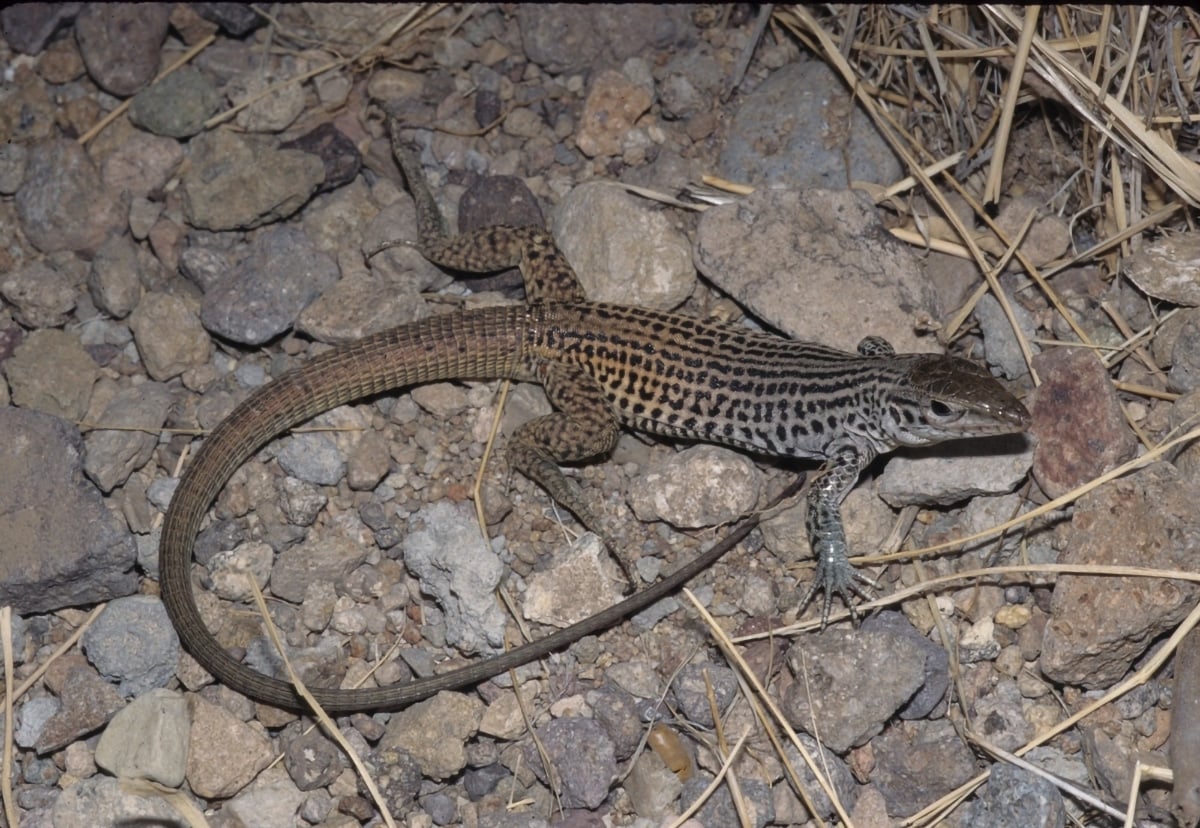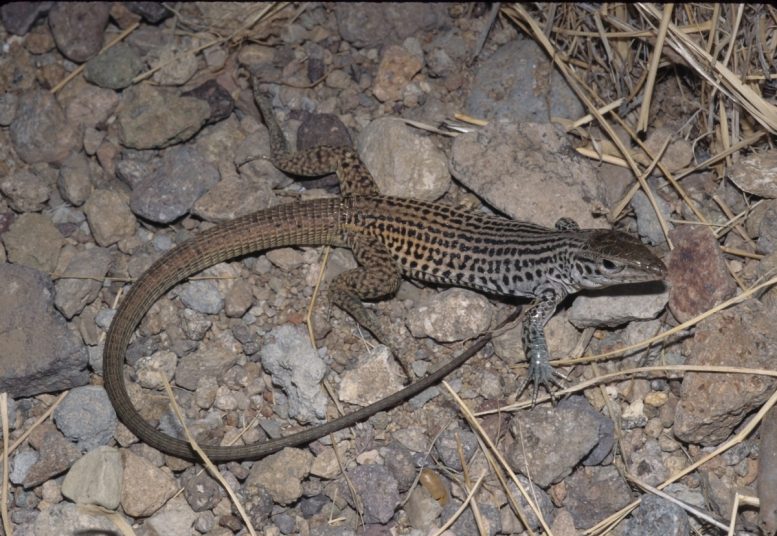

A team will assess whether the West Texas lizard qualifies as a new species and merits conservation efforts.
In the Chinati Mountains of western Texas resides a rare lizard known as Dixon’s whiptail. This swift reptile measures about 8 to 12 inches in length and has a gray body marked with white or yellow stripes. Primarily active during the day, it sustains itself on a diet of insects. It’s also extremely rare—in fact, it might be endangered.
The uncertainty over its status is due to the similarity between the Dixon’s whiptail and a slightly smaller and less rare reptile called the common checkered whiptail. Until now, researchers have been unable to tell if the animals are the same genetically, but that may soon change.
A group of biologists from The University of Texas at Arlington has begun a project to sample the DNA of the two types of lizards. If they prove to be different species, then Dixon’s whiptail may be eligible for protection as an endangered species.
Research Project in the West Texas Mountains
“Thanks to a grant from the Texas Parks and Wildlife Department, we will be going to the mountains in far West Texas to capture and sample DNA from these critters,” said Corey Roelke, a professor of instruction in biology at UT Arlington. He and biology Professor Matthew Fujita are the lead investigators on the project. “It’s not easy to catch them. They’re all female, blend in well with their surroundings, and are very fast. We will rely on lizard lassos (basically fishing poles with tiny lassos on the top) and sticky traps to catch animals for sampling their DNA.”

Once the team obtains genetic samples of both Dixon’s whiptail and the common checkered whiptail, they will analyze them using a variety of genetic sequencing tools, including UT Arlington’s new next-generation genetic sequencer. The researchers will also compare these current samples to previously sequenced samples from these lizards to see if the animals are genetically the same.
“By examining thousands of single-nucleotide polymorphisms distributed across the genomes, we will be able to tell once and for all if Dixon’s whiptail is a different species,” said Roelke. “If it is distinct, then it is rarer than the common checkered whiptail and it will qualify for both state and federal protection under the Endangered Species Act.”
If the researchers do not find evidence that the two species are distinct, evidence from the project would be sufficient to lump both lizards under the same name.
“Although collecting the specimens is always a challenge, it will be exciting to be able to use modern genetic science to finally solve this mystery,” said Roelke.
The team plans to start their project in January 2025, with the goal of wrapping up their findings by the end of the year.